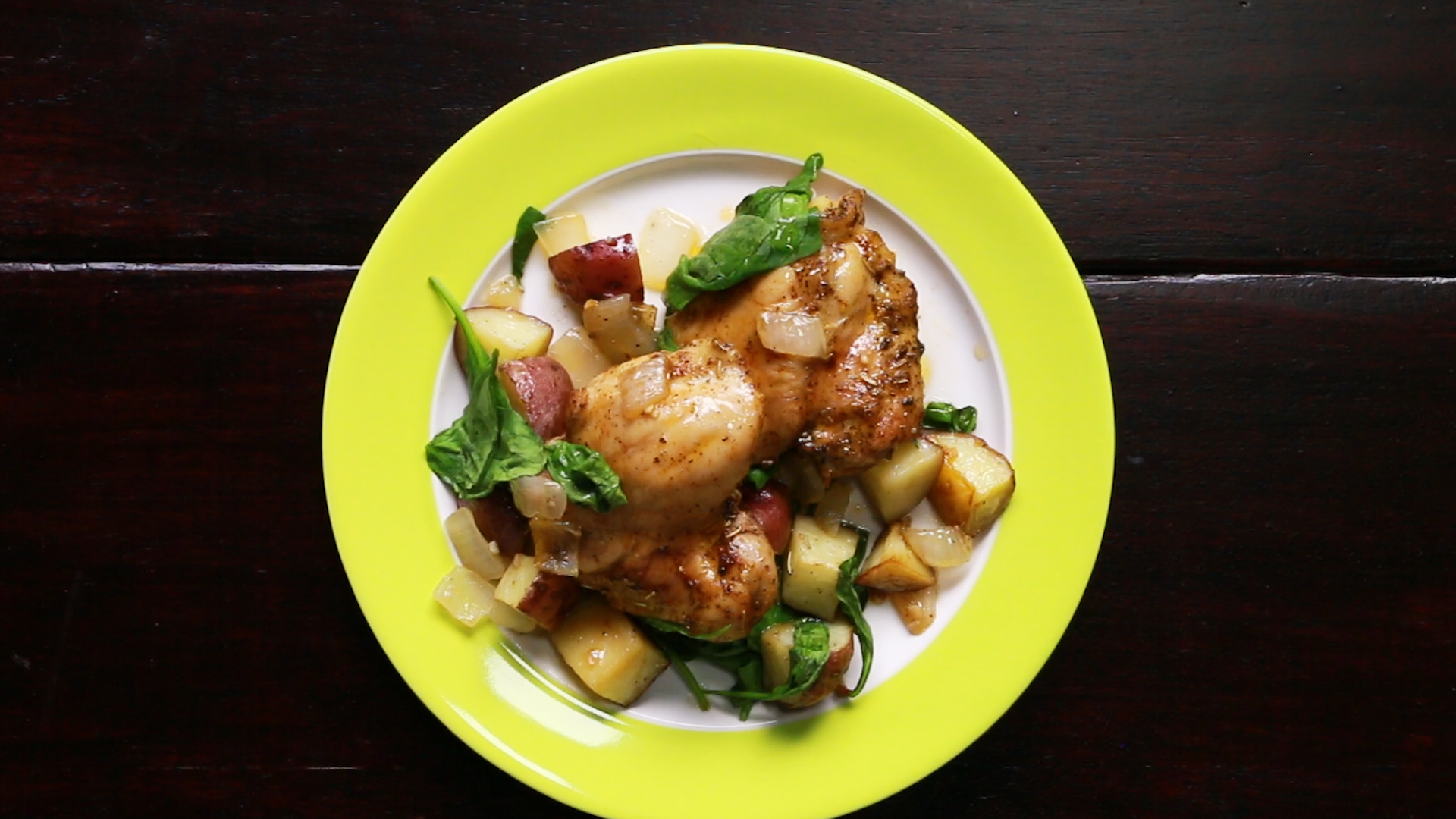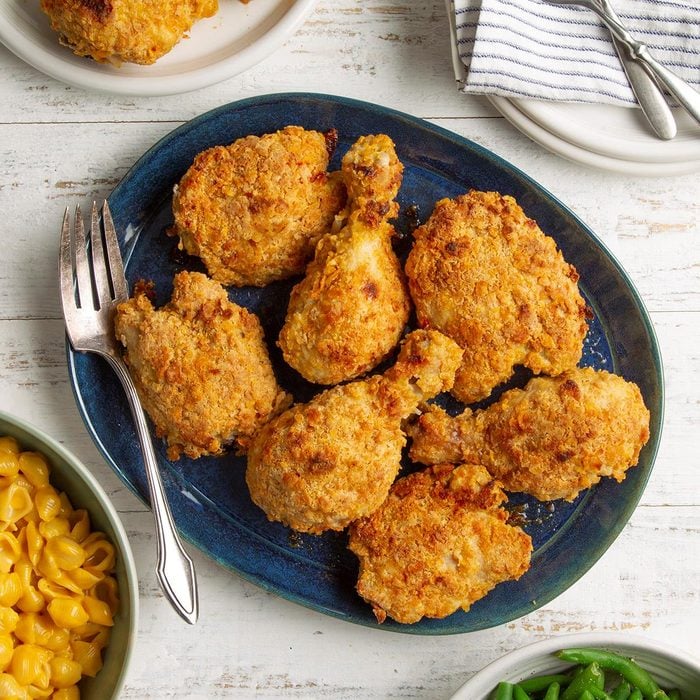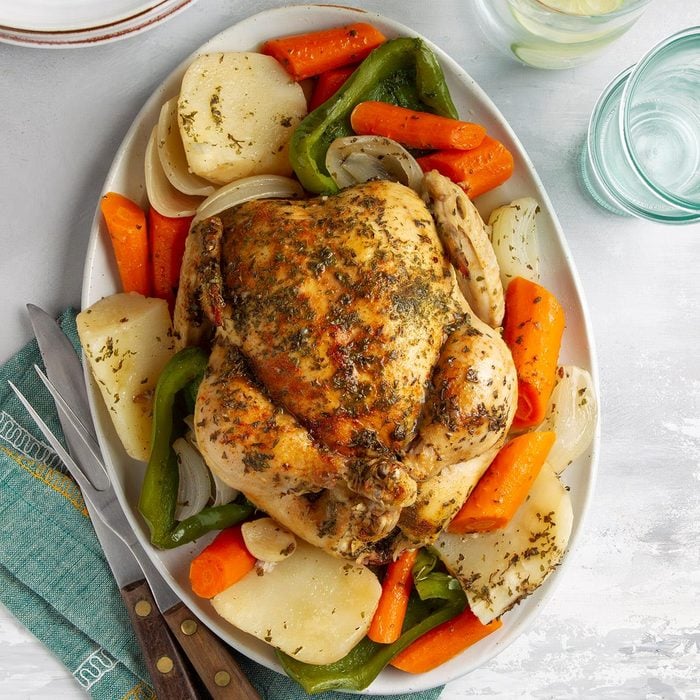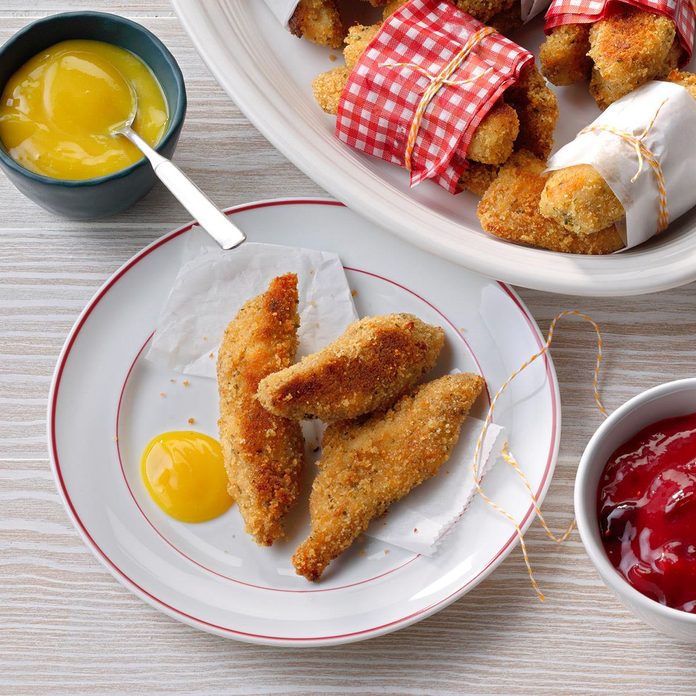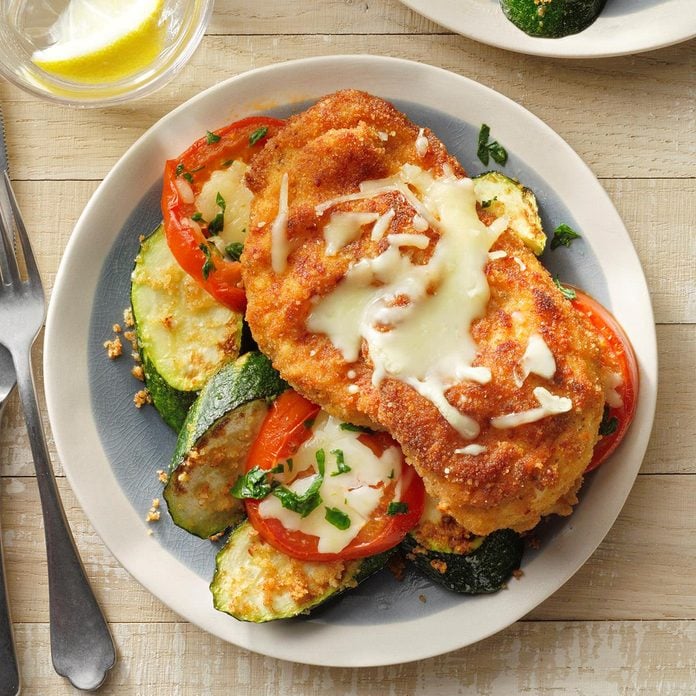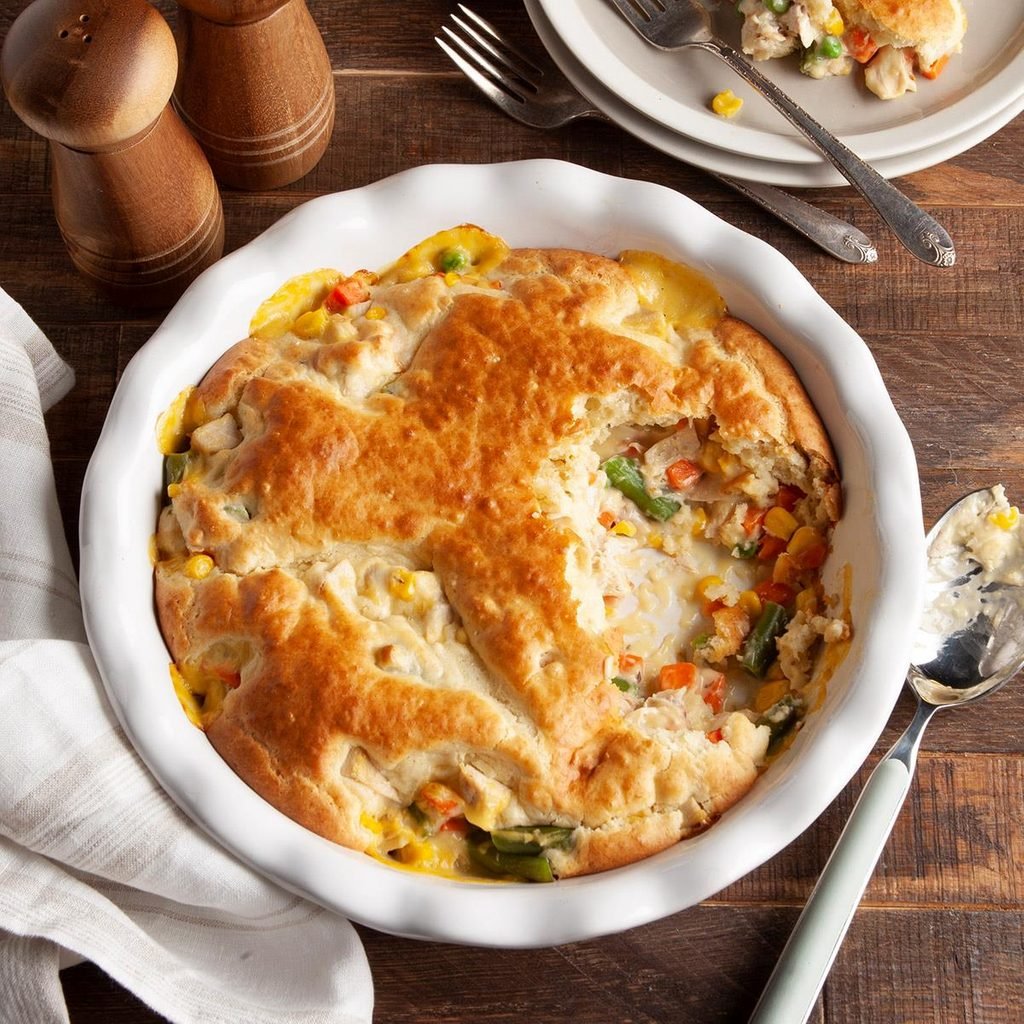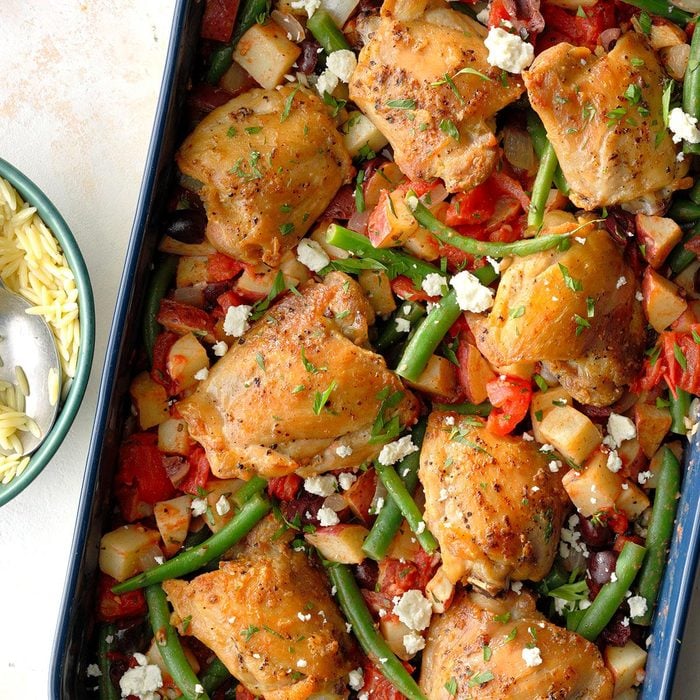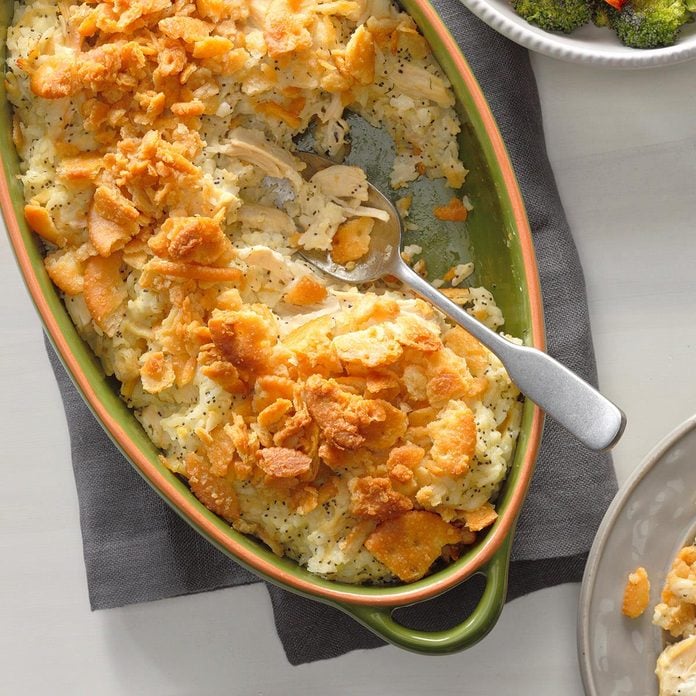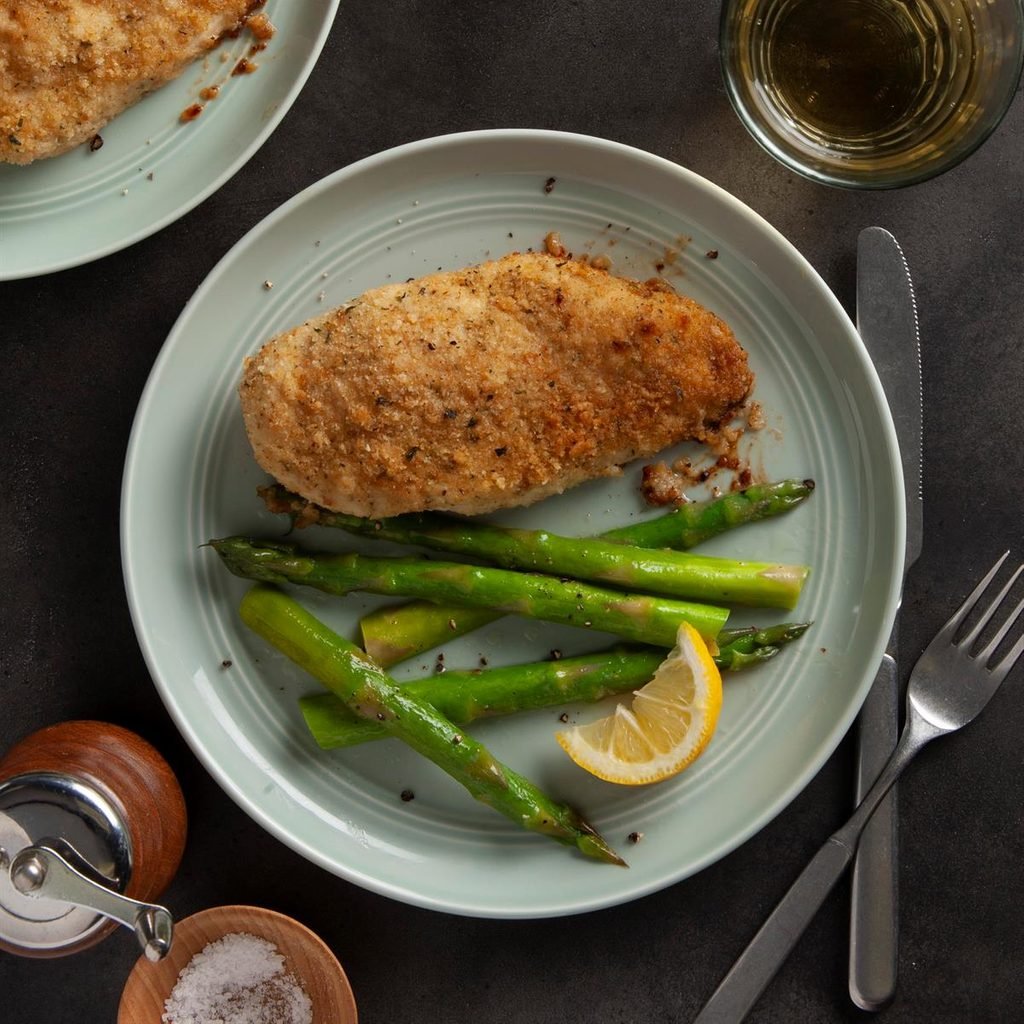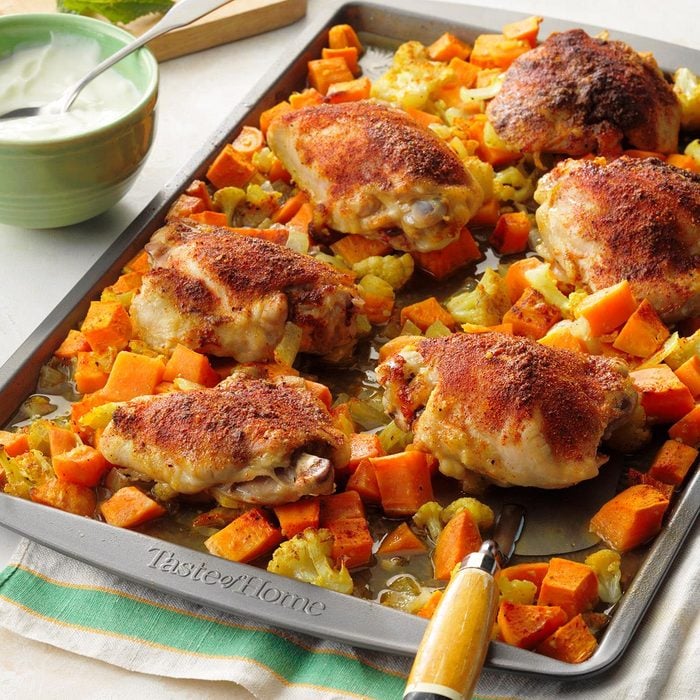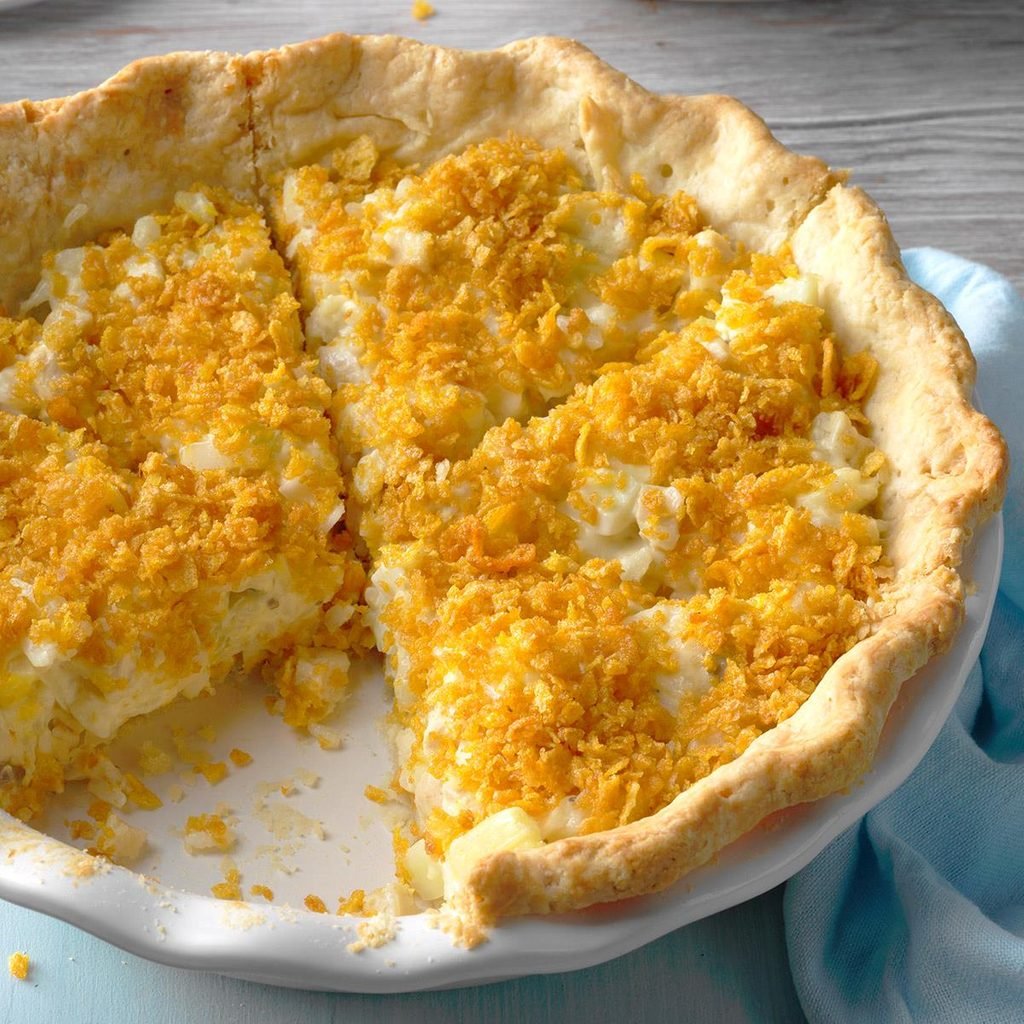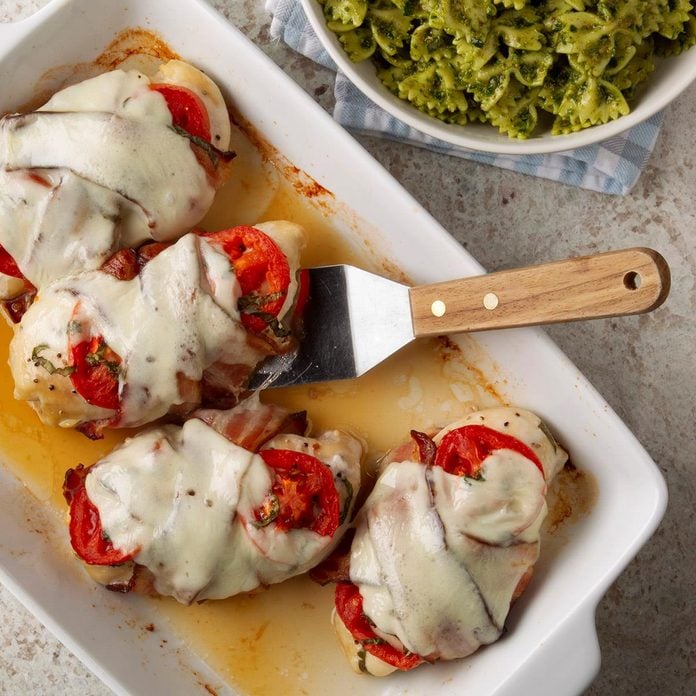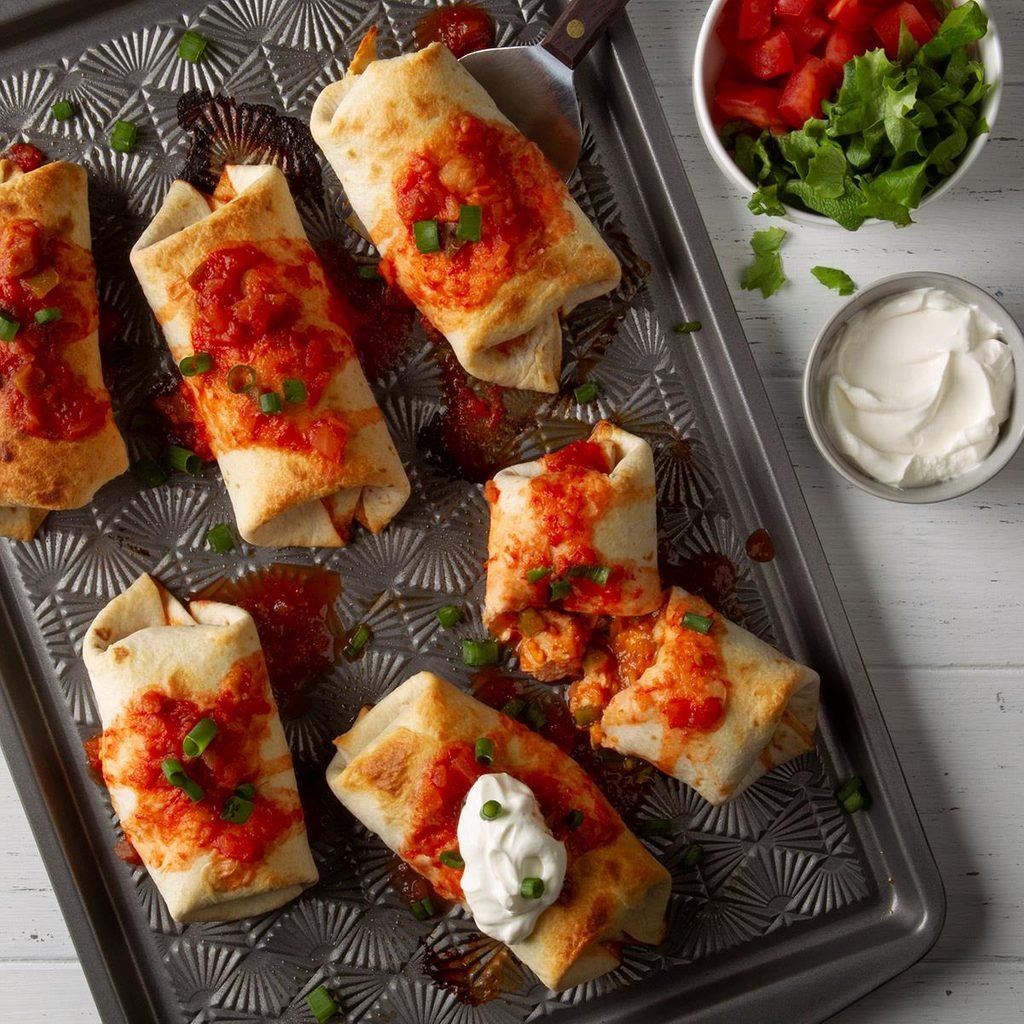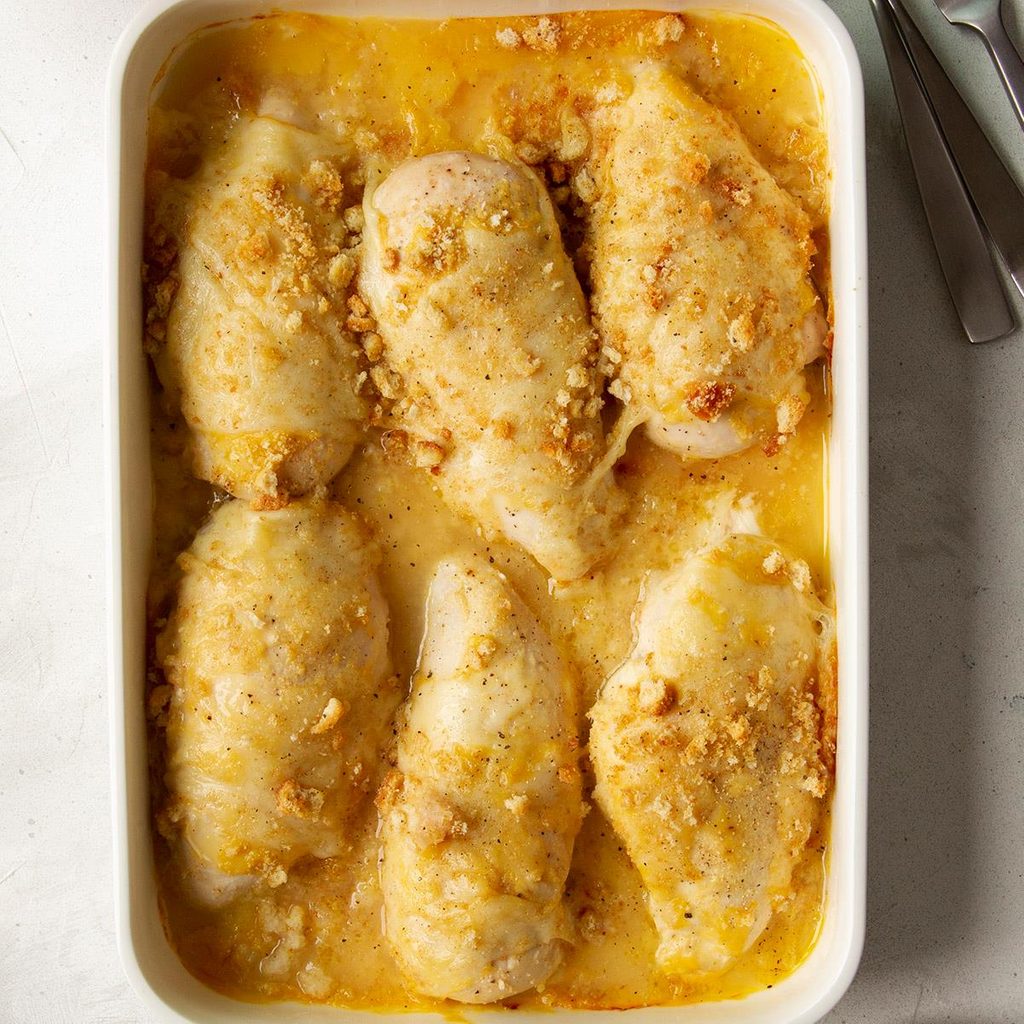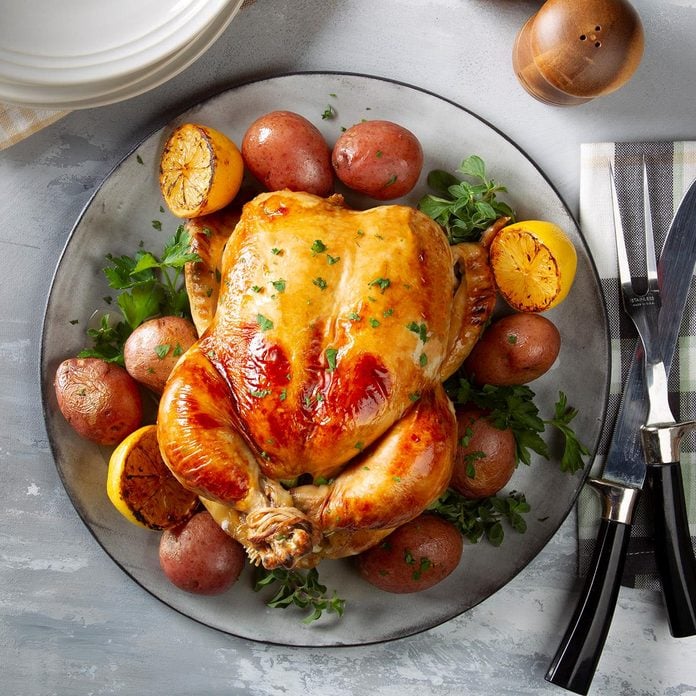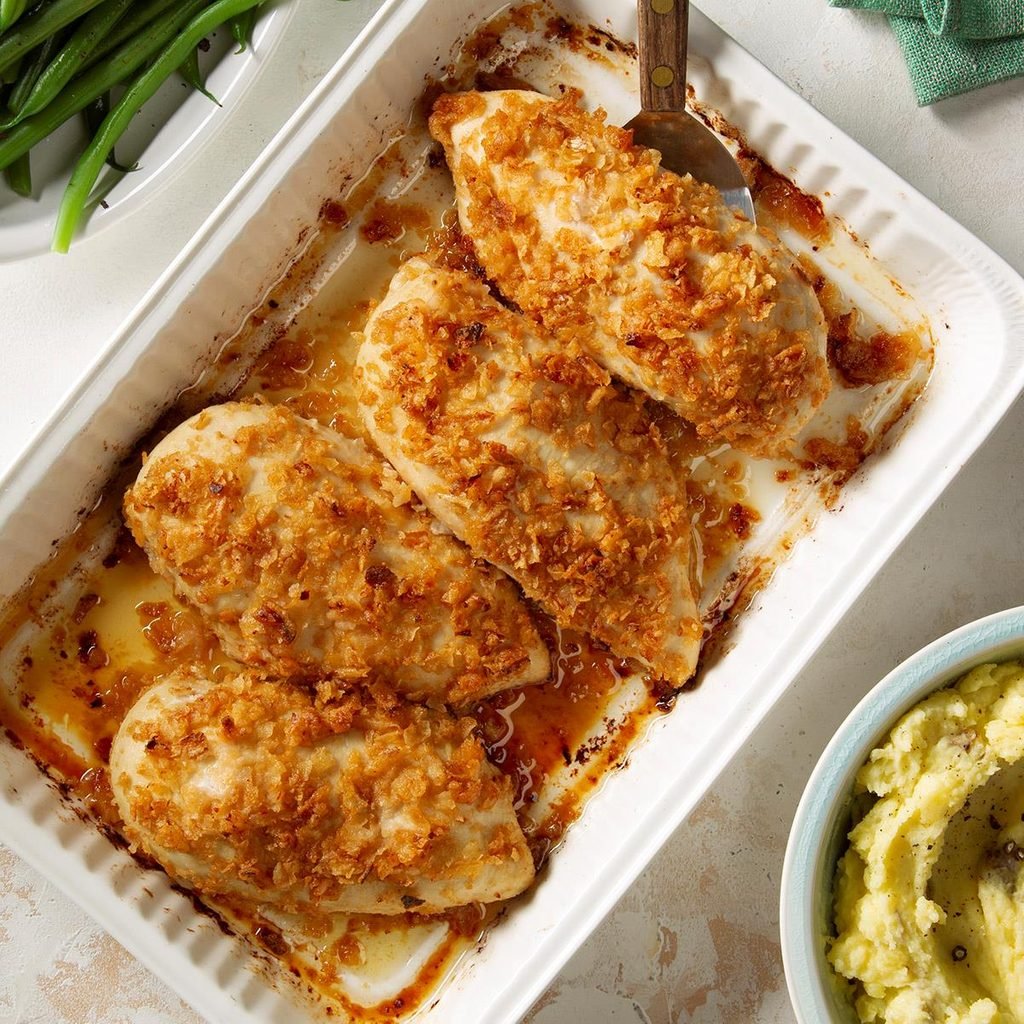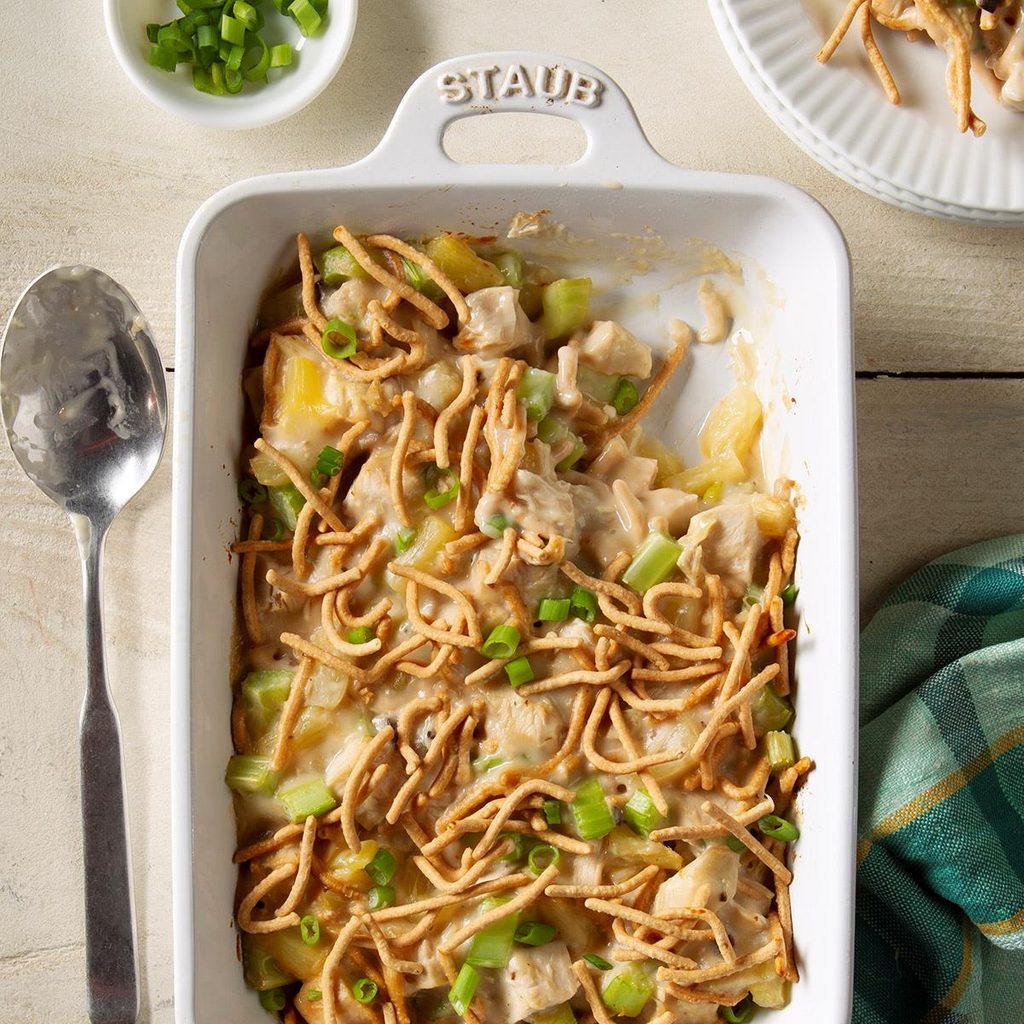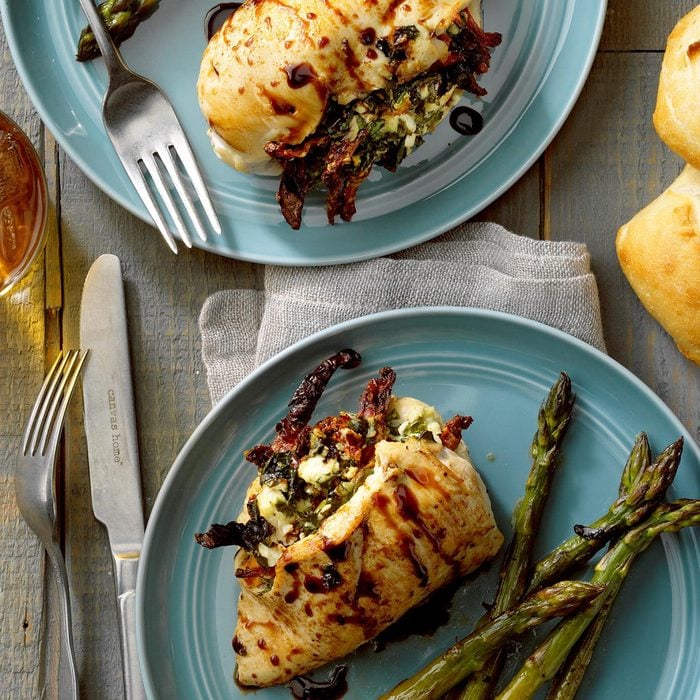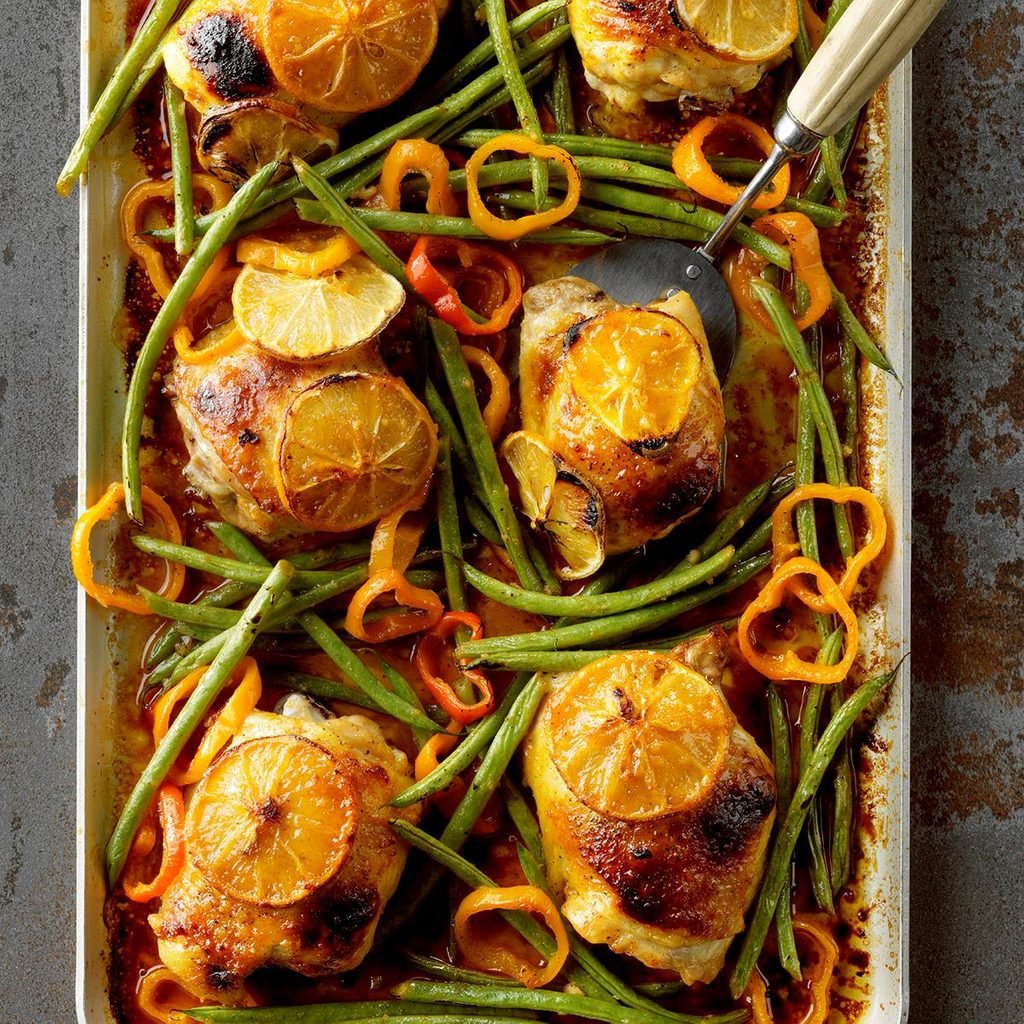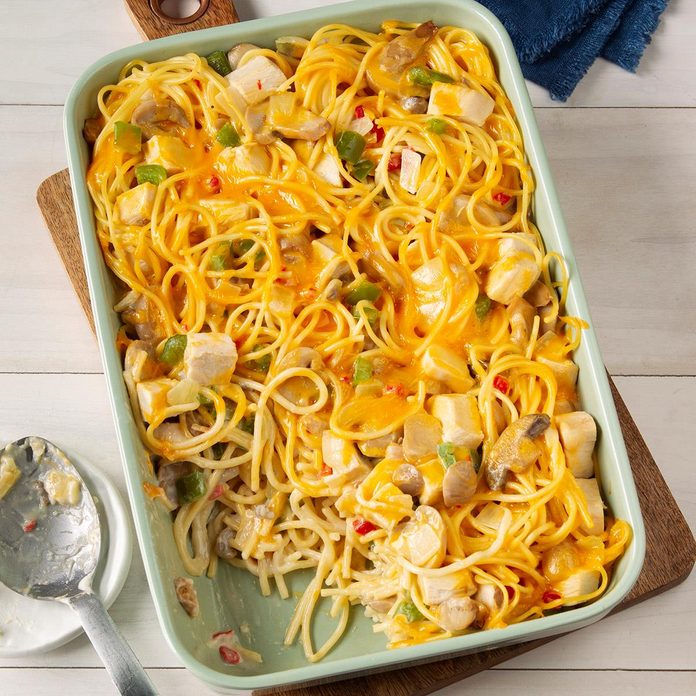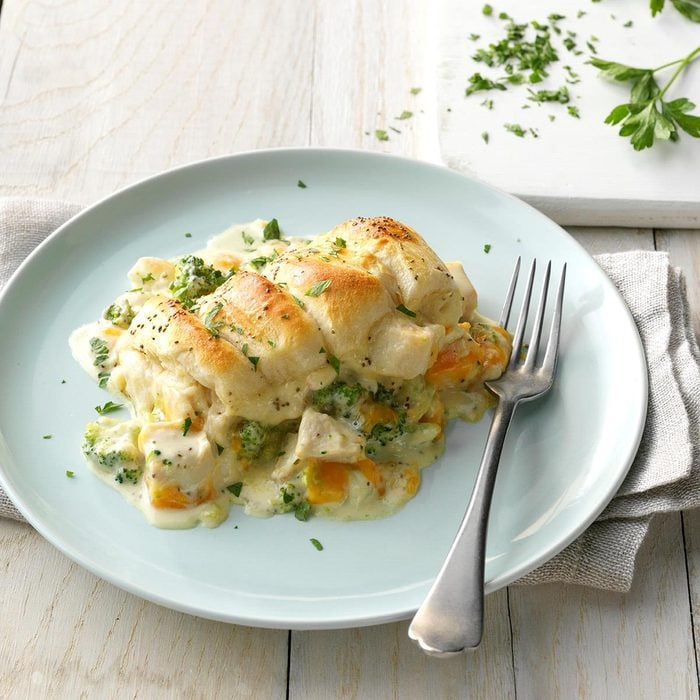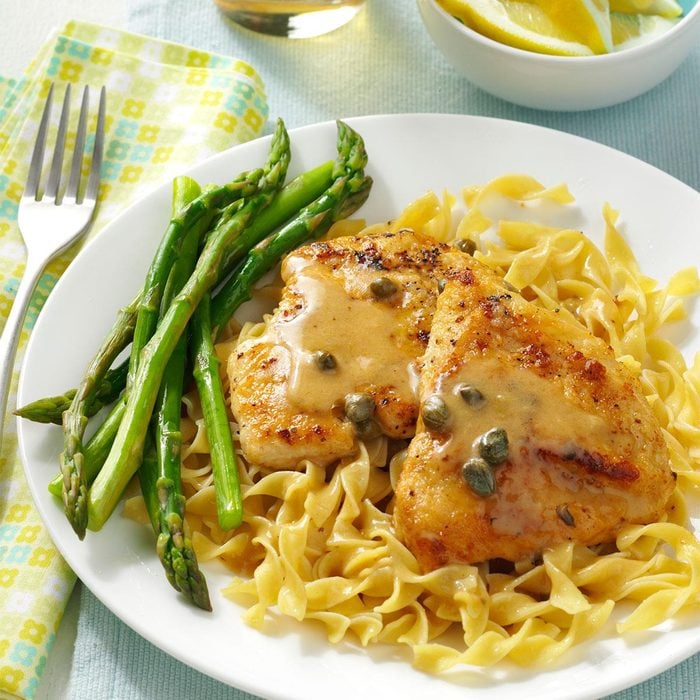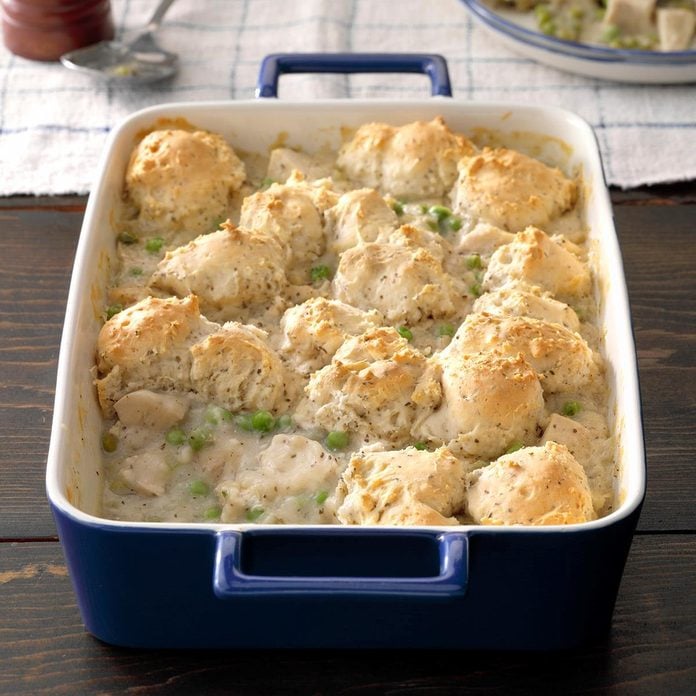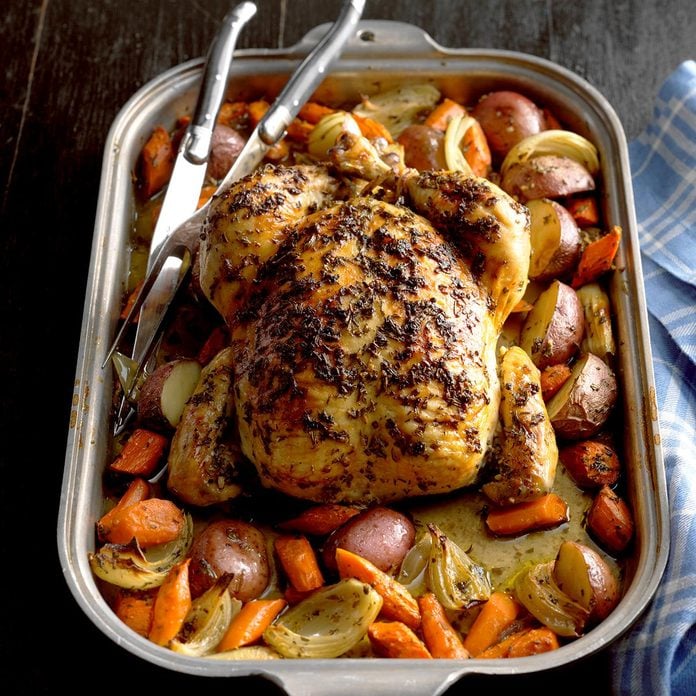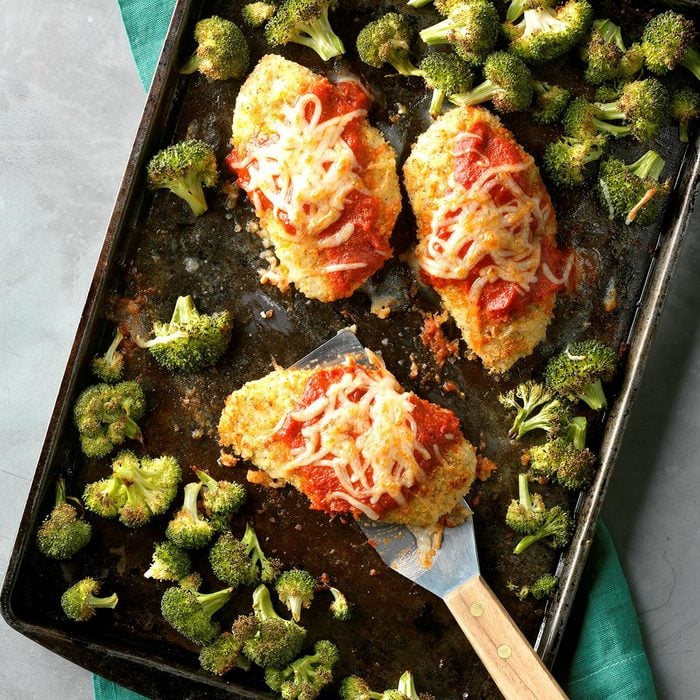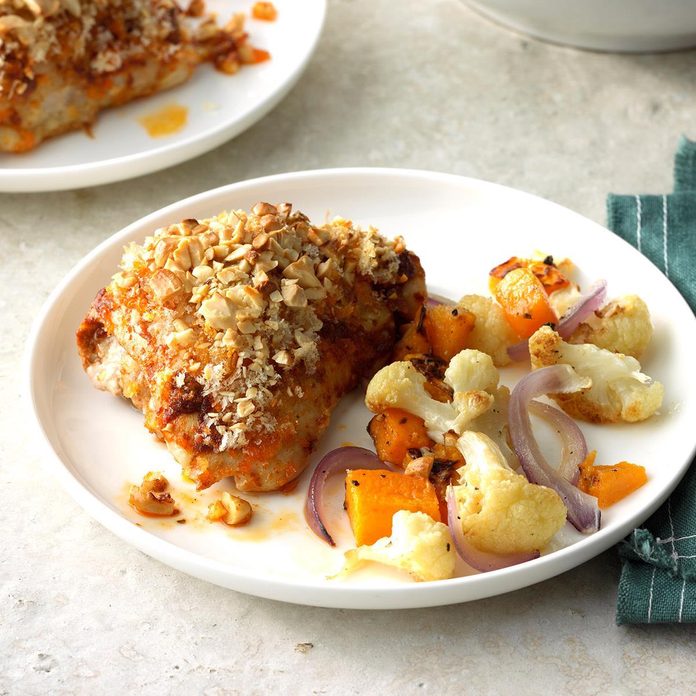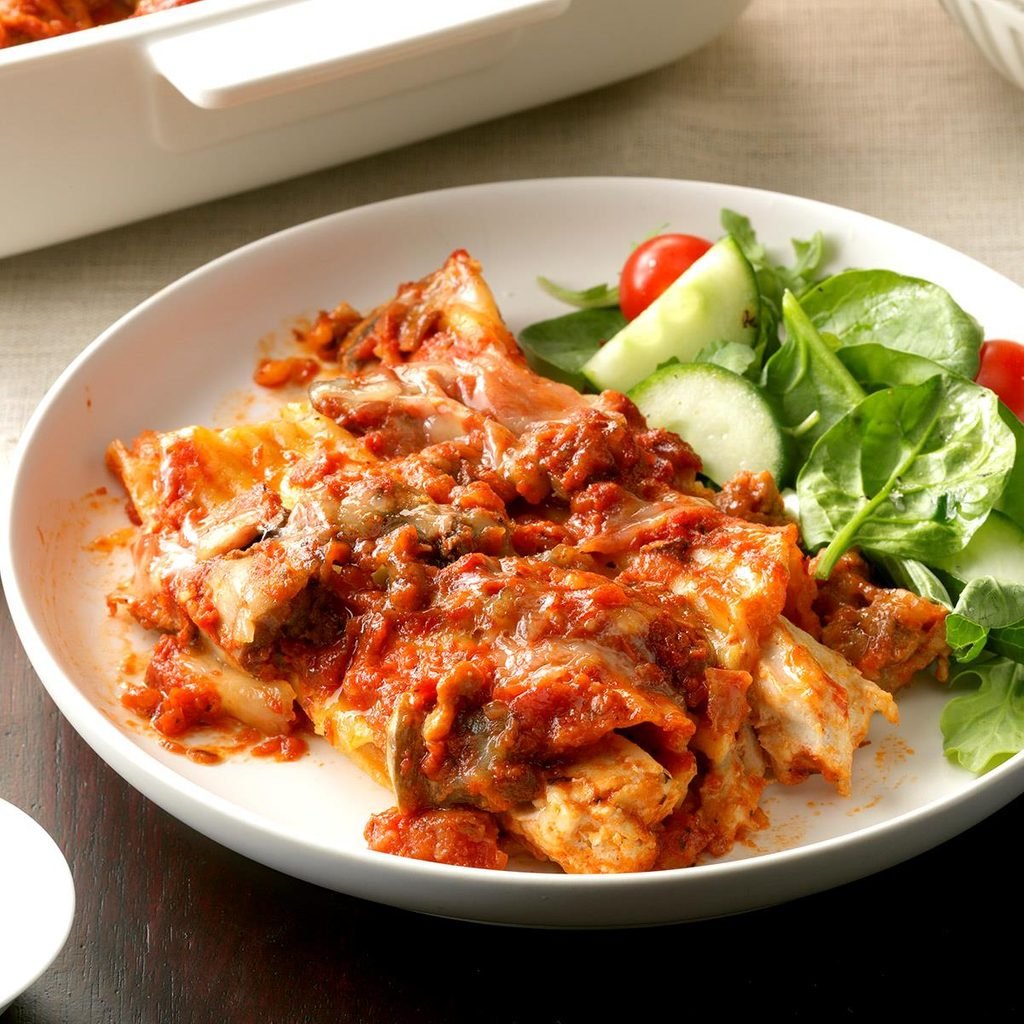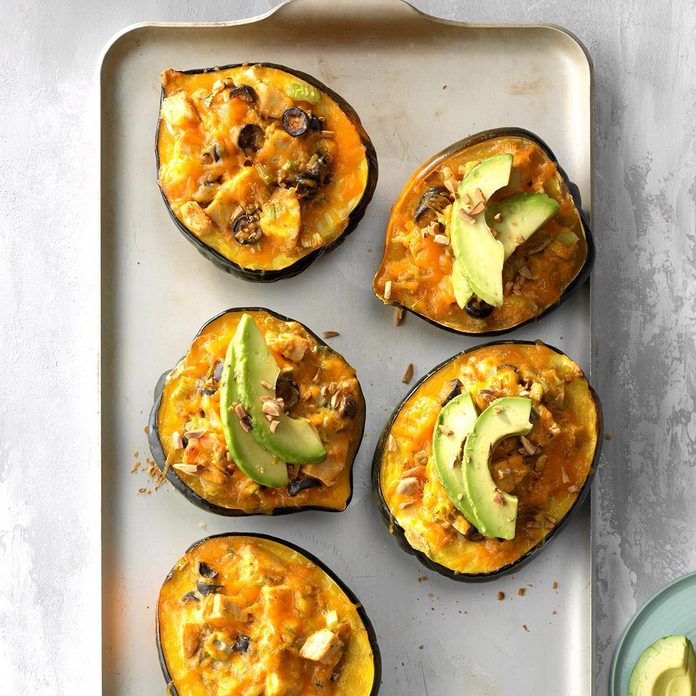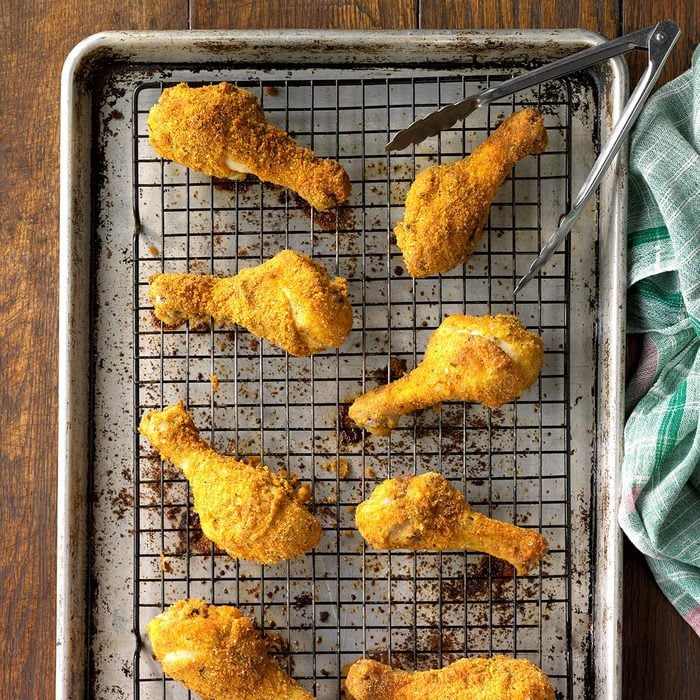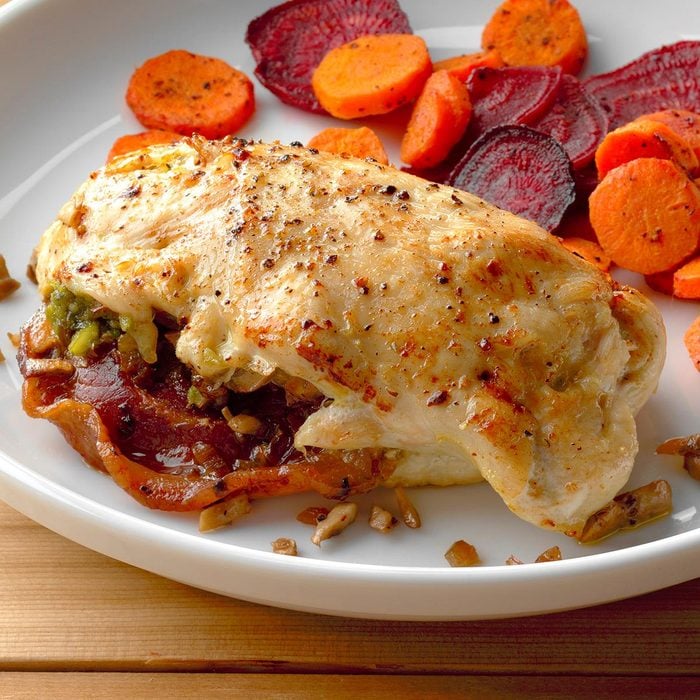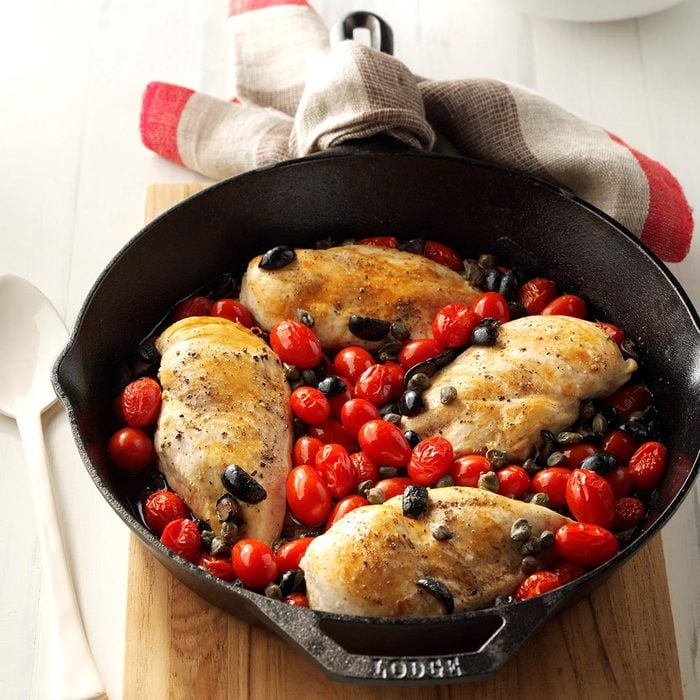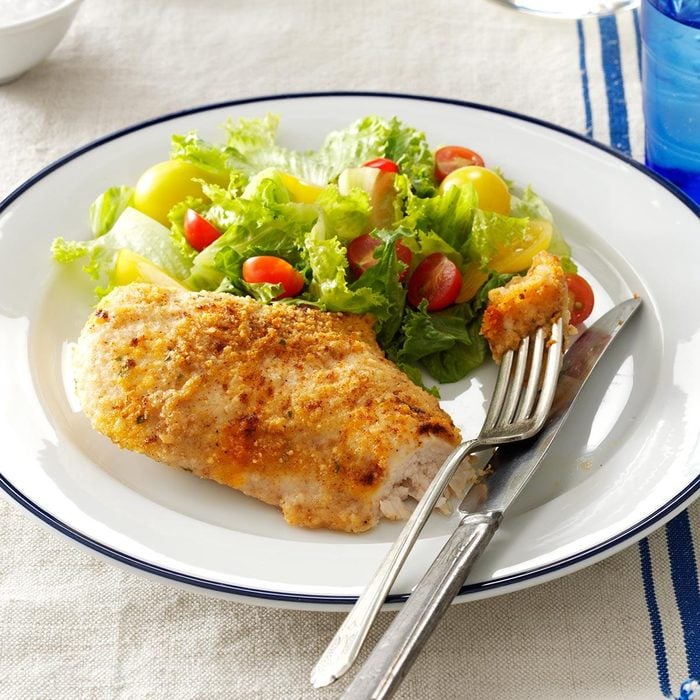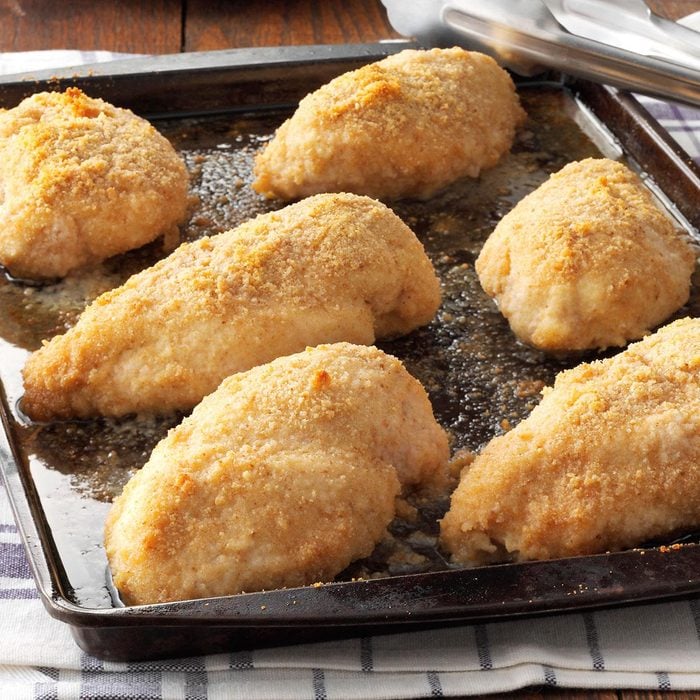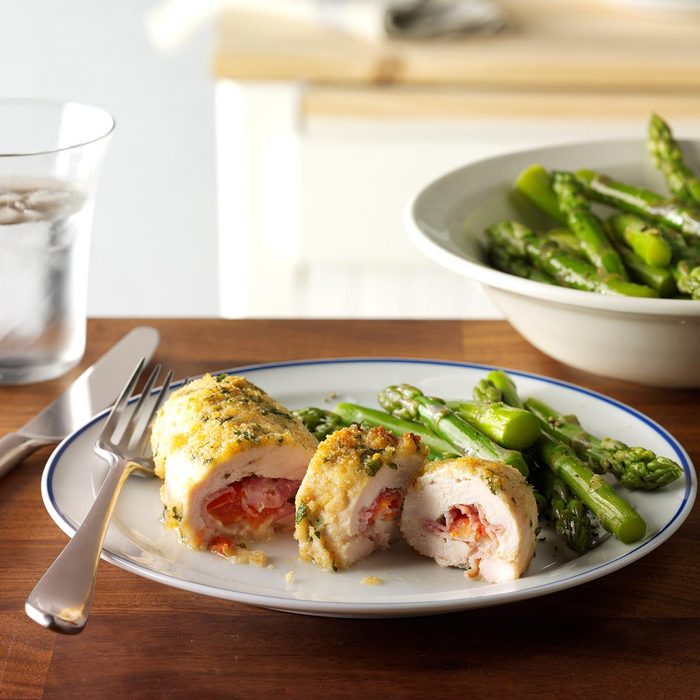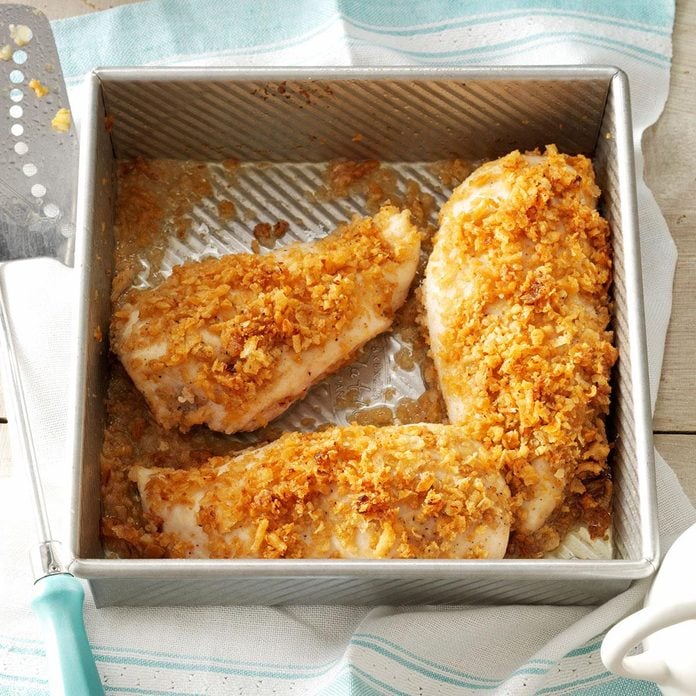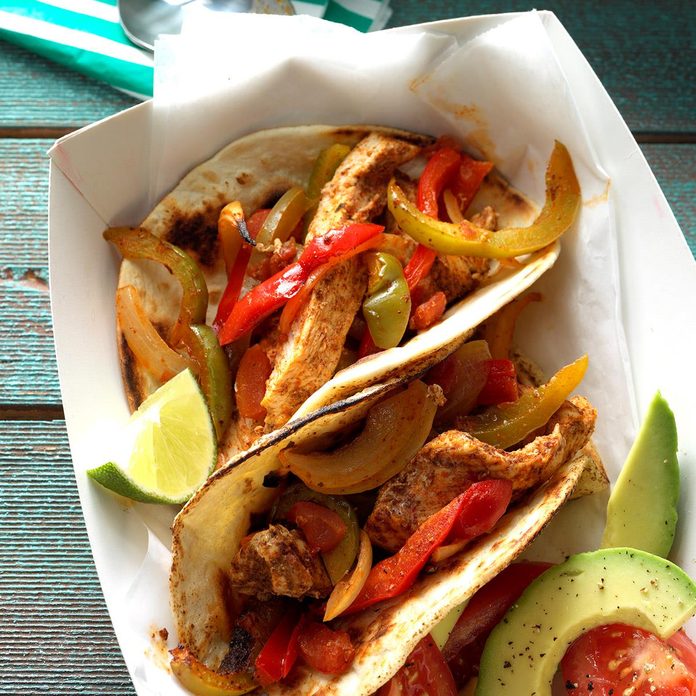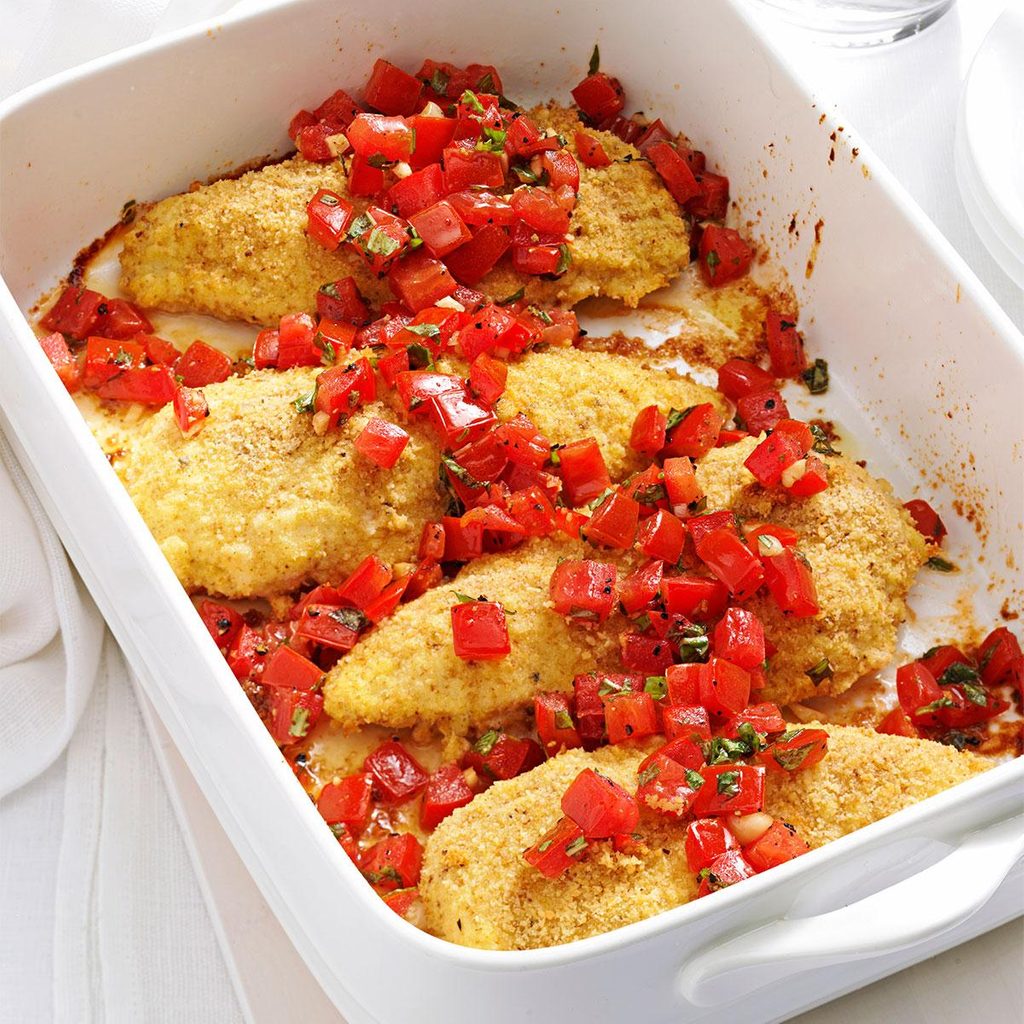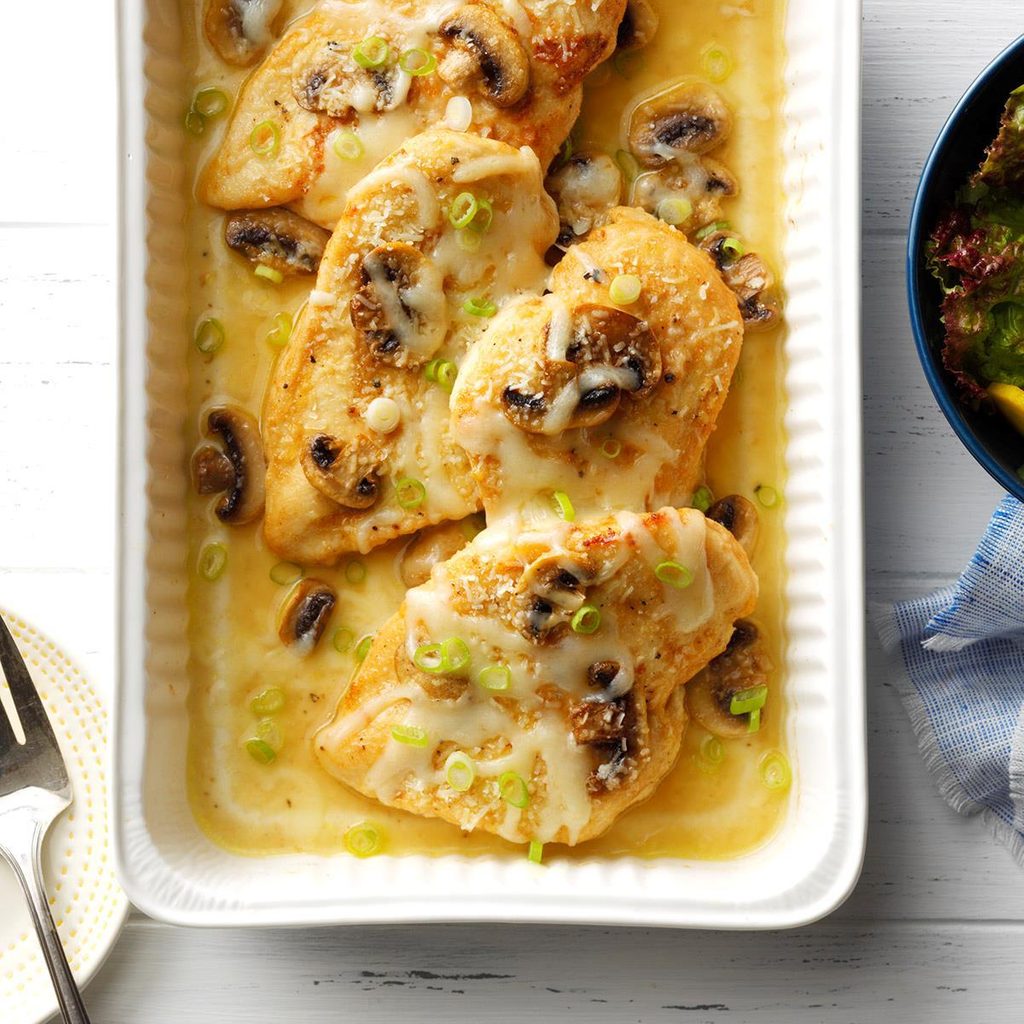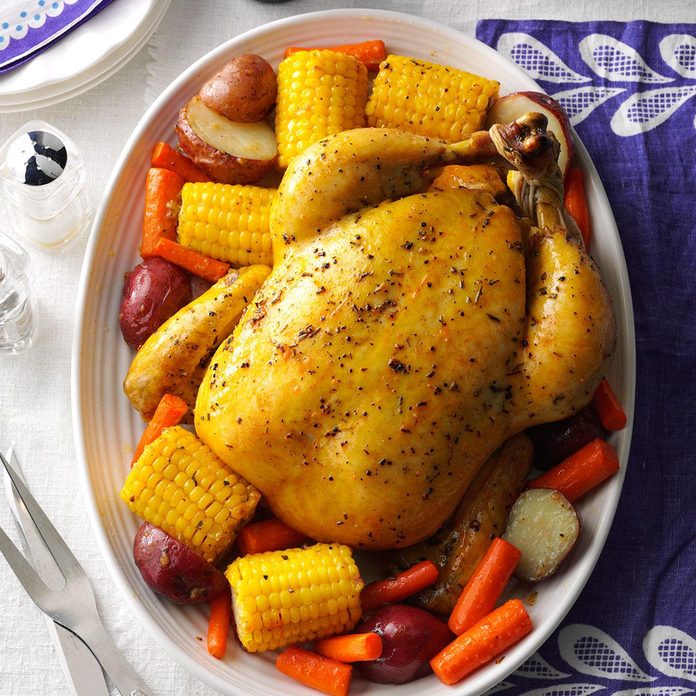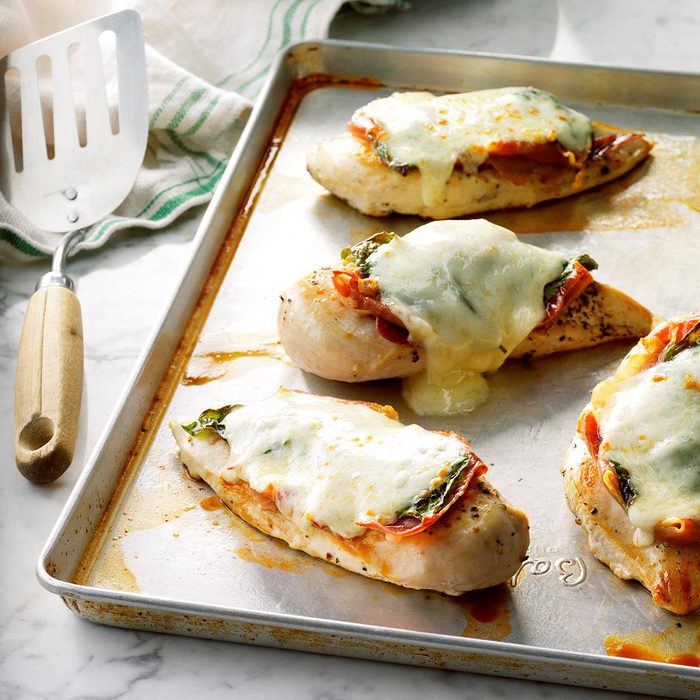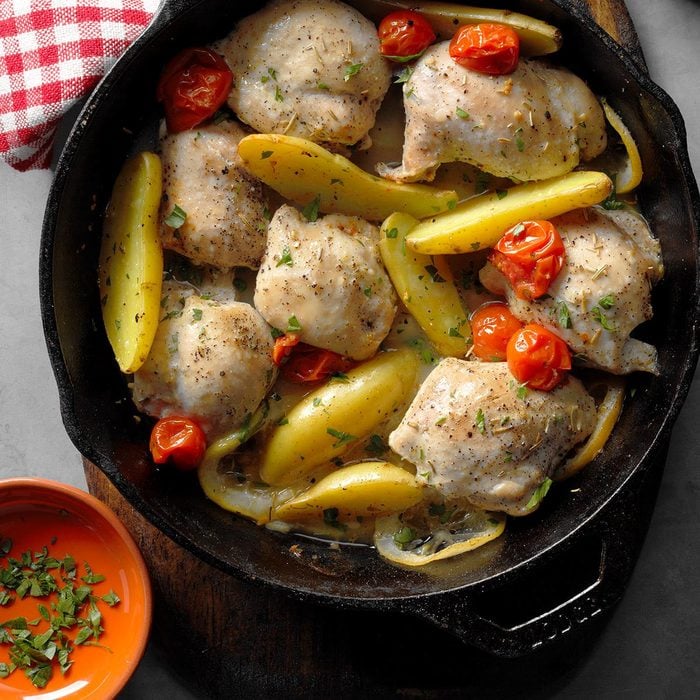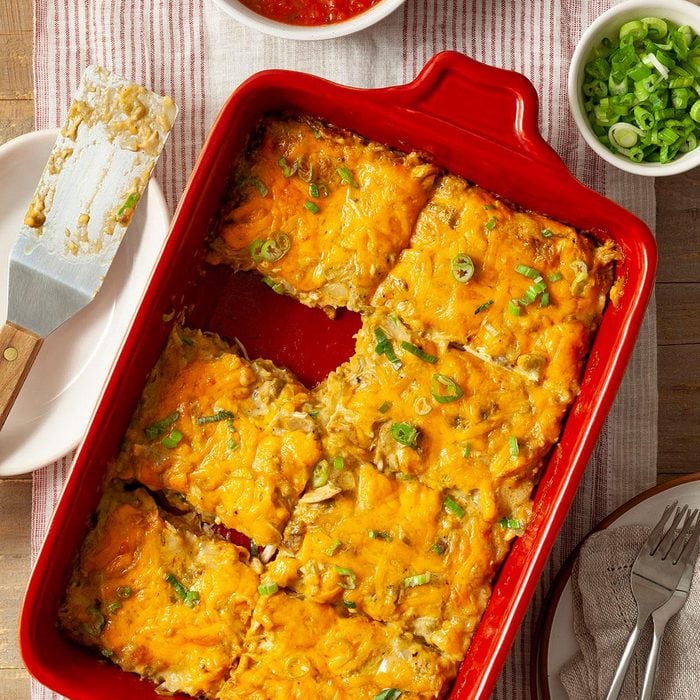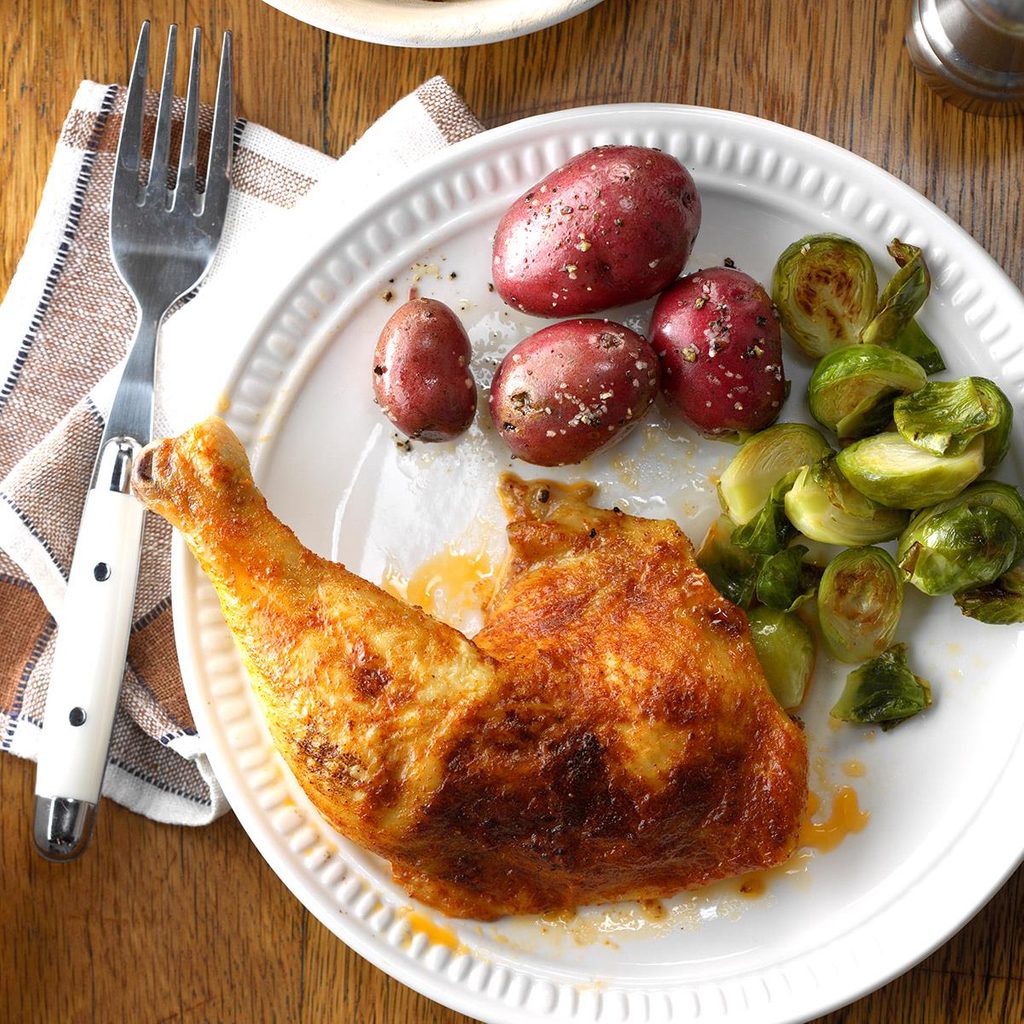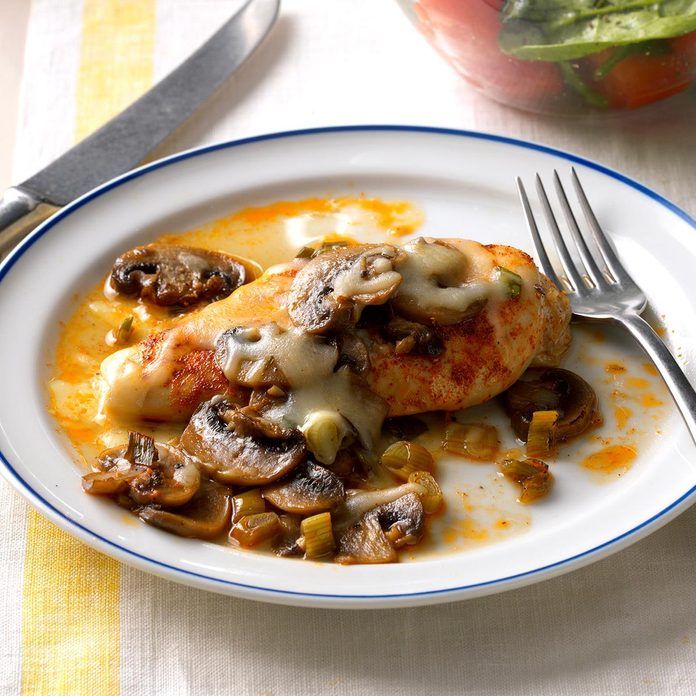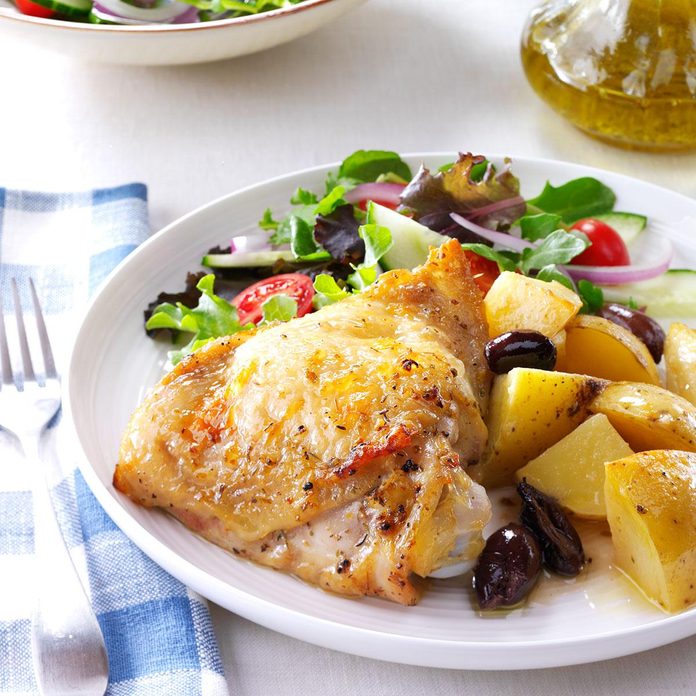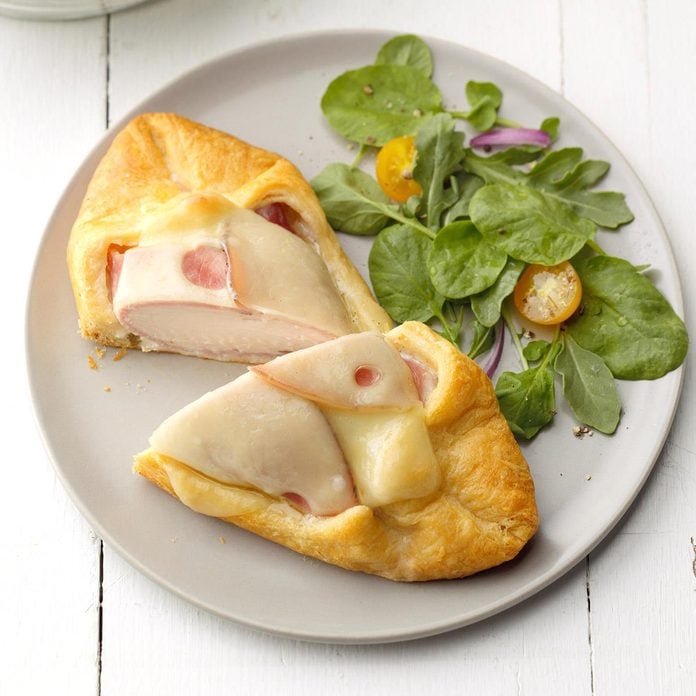This Is the Right Internal Temperature of Cooked Chicken
Updated: Apr. 05, 2024
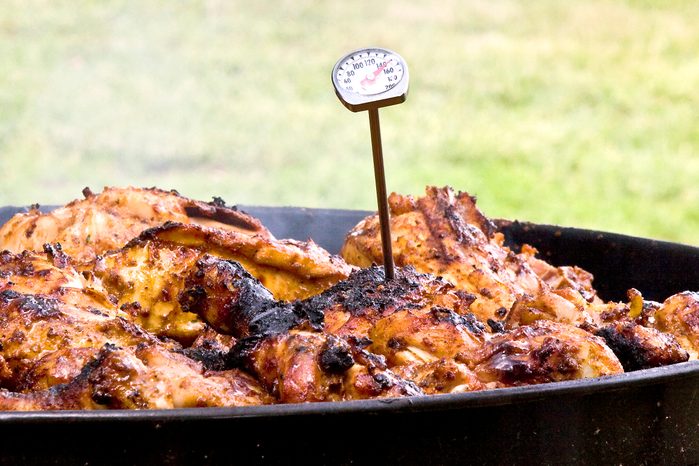
What's the correct temperature of cooked chicken? The answer should be pretty straightforward, but there's a lot of confusion out there.
Our editors and experts handpick every product we feature. We may earn a commission from your purchases.
In culinary school, times and food-safe temperatures were drilled into our heads. How long can cooked food remain unrefrigerated before it become unsafe? What are the conditions where you can defrost a chicken in water instead of the refrigerator? What’s the maximum amount of time that food can remain between 41° and 135°F? The one that was repeated the most often was the proper temperature of cooked chicken. I remember one of my instructors telling us that, as chefs, we basically had a license to kill. We could cause serious damage by serving bad chicken or undercooked chicken, especially when serving at-risk populations (like children, adults over 65 and anyone with a compromised immune system). Dramatic, sure, but it scared me enough to memorize the number 165°.
According to the USDA, 165° is the temperature that destroys bacteria like salmonella and E. coli. But some chicken recipes call for cooking chicken to 175°, and I’ve seen store-bought packages that say to cook chicken to 185°. So what’s the real answer for the correct temperature of cooked chicken? It really depends on what type of chicken you’re cooking.
How to Take the Internal Temperature of Chicken
The best way to take the internal temperature of chicken is with an instant-read thermometer. In general, you want to probe the chicken in the thickest part of the meat. Make sure the thermometer isn’t touching bone or a pocket of air or fat, which can give you a faulty reading. If you insert the thermometer into the locations listed below and pull it back a quarter inch, the reading should remain the same. If the reading jumps between those two locations, you know something is amiss.
These temperatures also apply when reheating chicken.
Chicken breast
Push the tip of the thermometer into the thickest part of the breast a little more than halfway through, avoiding the bone if cooking bone-in chicken. Most times, it’s easier to go in through the top, although it’s sometimes better to go in through the side. Use your best judgment based on which presents the thickest part of the chicken breast.
After the temperature stabilizes on the thermometer, slowly pull the probe back until it reaches the center of the chicken. If the lowest temperature reading is 165°, the chicken is done.
Chicken thighs
Push the tip of the thermometer through the thickest part of the thigh towards the meat’s center. There’s a small bone that runs through the center of the thigh, so you’ll want to pull the probe back if you happen to hit it.
When the temperature stabilizes on the thermometer, slowly pull the probe back to see if the temperature changes. If the lowest temperature reading is 175°, the chicken is done. You may want to continue cooking the thigh to as high as 195°, depending on personal preference.
Roast chicken
With a roast chicken, you’ll want to check two temperatures: the thighs and the breasts. Use the locations specified above and continue cooking until both locations reach the appropriate temperature.
Chicken wings and chicken drumsticks
It’s difficult to check the temperature on chicken wings and drumsticks. The goal is to insert a thermometer into the thickest part of the meat without touching bone, but wings don’t contain a lot of meat and drumsticks have a large bone running through the middle.
If you can’t get an accurate reading, you can tell if chicken drumsticks and drumettes are finished cooking by looking at the meat on the skinny side of the leg. The meat should shrink up, and you should be able to see a lot more bone than you could when you started cooking.
Internal Temperature for White Meat Chicken
White meat chicken (found in chicken breasts and chicken thighs) should reach an internal temperature of 165° and remain at that temperature for at least 30 seconds. Exceeding this temperature can result in dry, chewy chicken.
Because white meat chicken is so lean, it’s best to cook it at hot temperatures. Chicken breasts roasted in a 450° oven tend to turn out juicier than those cooked in a 350° oven.
Internal Temperature for Dark Meat Chicken
Dark meat chicken (found in chicken drumsticks and chicken thighs) is technically good to eat at 165°, but it’s better to reach a minimum internal temperature of 175° or higher (I generally take my chicken drumsticks closer to 190° to reach the perfect level of tenderness). This type of chicken has more connective tissue than white meat chicken, so it needs higher temperatures to break down. It’s similar to lean beef tenderloin versus fatty beef brisket: Beef tenderloin tastes great at rare or medium-rare temperature, but beef brisket needs to reach 195° to 200° to become tender.
Using lower, slower cooking methods is best for dark meat chicken. Roast dark meat in a 300° oven, braise it in a flavorful liquid or cook it over indirect heat on the grill.
Cooked Chicken FAQs
How to tell if chicken is cooked without a thermometer
An instant read thermometer is the best way to tell when chicken recipes are done. If you find yourself without one, you can cut into the thickest part of the chicken to view the color. Cooked chicken should be firm, white and opaque, and the juices should run clear as you cut into the meat.
The best meat thermometers to use for checking internal temperature
Look for a digital meat thermometer with quick reading speeds and a thin probe, so you don’t lose too many juices when checking the temperature. Our Test Kitchen’s favorite thermometer is this speedy Thermapen. It reads the temperature in less than a second, so you can test the doneness without keeping the oven open for extended periods.
Does the cooking method matter for chicken temperature?
Whether you’re roasting chicken in the oven, pan-frying, deep-frying, grilling or smoking, internal temperatures all remain the same. White meat should reach an internal temperature of 165° and dark meat 175°. The internal temperature of meat in leftover chicken recipes should still reach 165°.
Is 145° safe for chicken?
According to ThermoWorks, pasteurization of chicken is obtained by reaching 165° or by holding chicken at 145° for 8-1/2 minutes. Both of these methods kill harmful bacteria like salmonella and E. coli. That’s why you may see some sous vide recipes that call for cooking chicken at lower temperatures. That said, you should use the USDA recommended temperature minimum of 165° if you have any concerns about food safety or if you’re feeding an at-risk population.
Is it OK to eat chicken that’s a little pink?
Let’s say you used a thermometer that confirmed your chicken reached a safe temperature. When you cut into the chicken, the meat is a little pink or the juices don’t run clear. Is the chicken still safe to eat? Probably! Color is a good indicator when you don’t have a thermometer, but a chicken’s coloring can be affected by more than just temperature. Hemoglobin, the chicken’s feed, whether the chicken has been previously frozen or bone marrow pigment can all color chicken meat, giving it a pink hue even after cooking.

